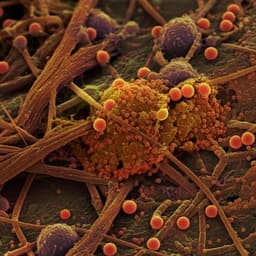
Earth Sciences
Microbial necromass carbon and nitrogen persistence are decoupled in agricultural grassland soils
K. M. Buckeridge, K. E. Mason, et al.
This intriguing study by Kate M. Buckeridge and colleagues explores the role of microbial necromass in soil carbon dynamics. Discover how its persistence compares to plant litter and the impact of management practices in grasslands on carbon sequestration. Delve into the surprising findings of carbon mineralization and its implications for agricultural sustainability.
~3 min • Beginner • English
Related Publications
Explore these studies to deepen your understanding of the subject.







